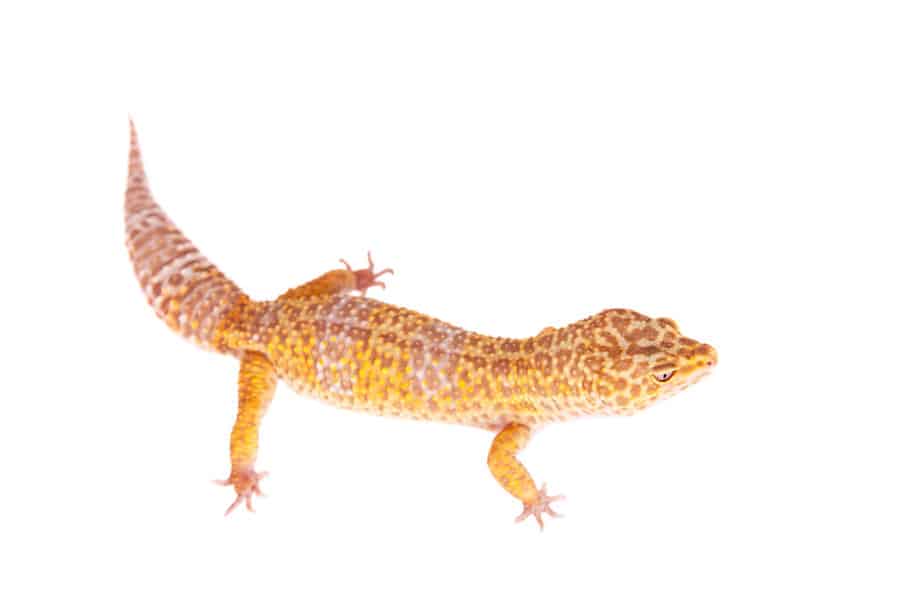Owning a leopard gecko can be an incredibly rewarding experience These fascinating reptiles can live up to 20 years when properly cared for As a responsible pet owner, it’s important to regularly monitor your leopard gecko to ensure it stays happy and healthy. Here are some of the top signs that your leopard gecko is in good health.
Check Its Weight
Weighing your gecko regularly is a simple way to gauge its health, A healthy adult leopard gecko should weigh between 45g and 90g depending on gender Females tend to be slightly smaller than males, Young hatchlings usually weigh 6g to 8g
Sudden weight loss may signify an illness or parasites. If your gecko is looking thin or underweight, schedule a vet visit.
Examine Its Tail
A fat, full tail is the hallmark of a healthy leopard gecko. Their tails store fat reserves that sustain them when food is scarce. The tail size should be notably larger than the gecko’s stomach area.
If the tail seems thin or deflated, it likely indicates poor health, malnutrition, or weight loss. Have your vet run tests to determine the cause.
Check Its Body Condition
Visually inspect your leo’s body. Healthy geckos have full, rounded bodies with no visible spine or hip bones protruding. The stomach area should be softly rounded, not sunken in.
Emaciated geckos with prominent bones often have an underlying health issue causing weight loss. Parasitic infections are a common culprit.
Monitor Feces
Your gecko’s poop also offers insight into its health. Normal leopard gecko feces are solid, brown or black, and passed every 2-3 days. Diarrhea, oddly colored feces, bloody stool, or constipation can signify illness.
Observe Its Eyes
Healthy leopard geckos have bright, clear eyes that are open wide. Sunken eyes can indicate dehydration. If your gecko cannot open an eye, or it looks cloudy or oozing, it may have an infection requiring medication.
Check Its Mouth
Peek at your leo’s mouth. It should look clean with no discharge or stuck shed skin. Yellow/white plaque on the teeth or gum inflammation can be signs of mouth rot.
Examine Its Skin
Your gecko’s skin should be smooth with no lesions, parasite traces, or retained shed skin. Normal shedding happens every 4-8 weeks. Incomplete sheds can indicate improper humidity or nutrition.
Monitor Eating Habits
Healthy leopard geckos readily eat live insects at every feeding time. Sudden disinterest in food may signal illness or stress. Schedule a vet visit if your gecko stops eating.
Assess Activity Levels
Healthy leos are active and energetic, especially in the evening. Lack of normal movement or sudden lethargy is cause for concern. It often indicates sickness, metabolic issues, or husbandry problems.
Have Regular Vet Checkups
An annual wellness exam allows your vet to spot potential issues early. They can also analyze fecal samples for parasites, perform other diagnostic tests, and provide expert advice on keeping your gecko healthy!
By staying attentive to your leopard gecko’s weight, appetite, energy, and other signs, you can optimize its health and wellbeing. Consistent vet care provides an extra layer of preventative medicine. With proper care, your leo can thrive for many years!

Common Leopard Gecko Health Problems
FAQ
How do I tell if my leopard gecko is healthy?
Healthy leopard geckos should have a plump belly and a thick, fleshy tail (which is where they store fat). An unhealthy or malnourished leopard gecko will have a thin looking tail and body.
Do leopard geckos have health issues?
2. Hypovitaminosis A. This is a common problem in leopard geckos due to an inappropriate diet and poor supplementation. It results in retained hemipenal casts, impaired shedding and eye problems.
How do I make my leopard gecko healthy?
Leopard geckos should receive supplementation with both calcium and multivitamin supplements. Prey items should be dusted with a calcium carbonate supplement with no added vitamins or minerals prior to being fed at least three times weekly.
What does a healthy adult leopard gecko look like?
Clear, bright eyes are one of the signs of a healthy leopard gecko. They should be active and the belly should not touch the floor, apart from when resting. Well-fed geckos will have a thick tail.
